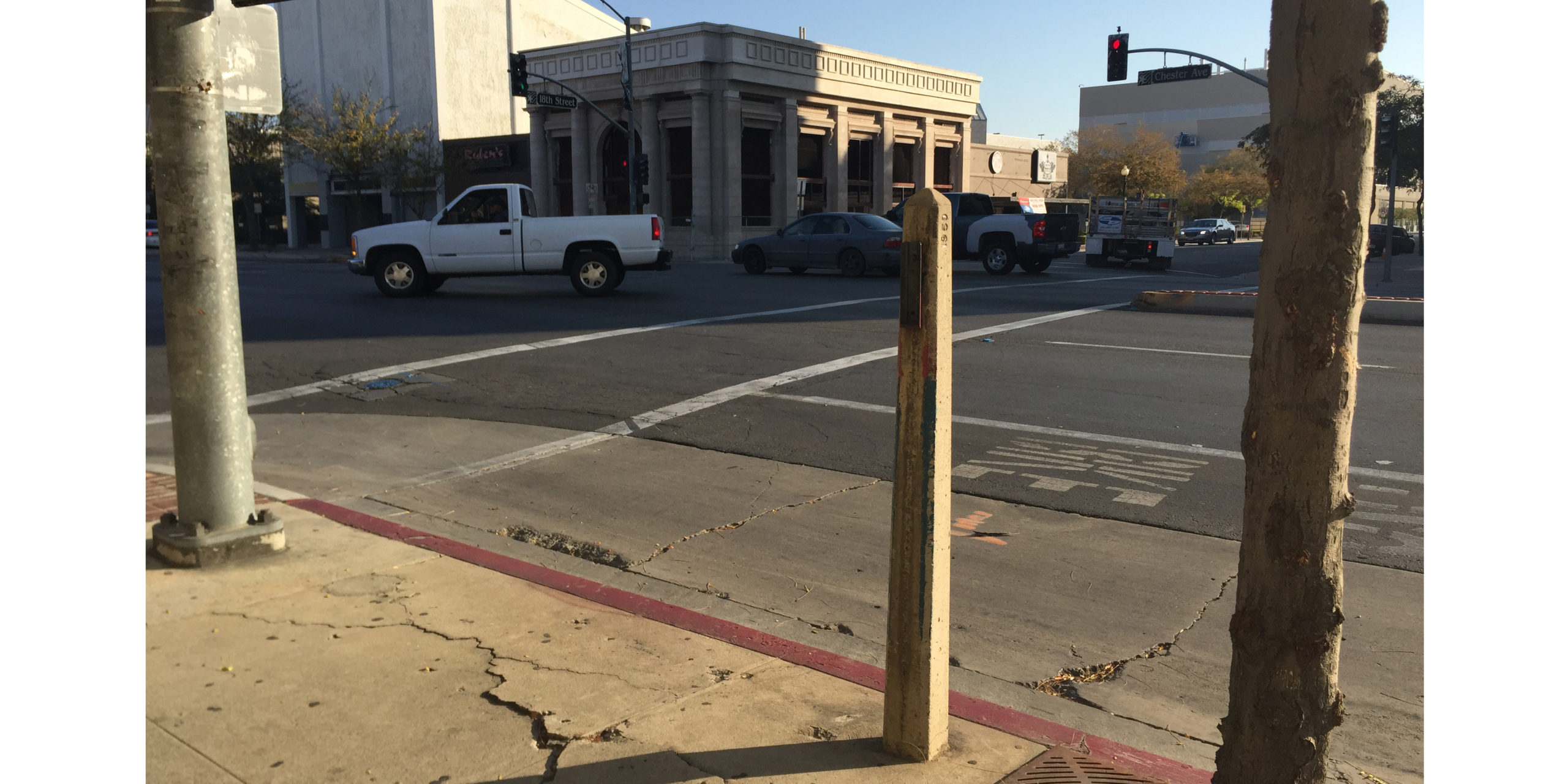Solving a mystery of the history outside of the Chain | Cohn | Clark building
November 11, 2015 | Article by Chain | Cohn | Clark staff | At the Firm , News & Media Social Share

Each week, The Bakersfield Californian features answers to questions posed by readers of the publication in a column called “Ask the Californian.” Recently, Chain | Cohn | Clark asked a question in the column and requested help from readers of The Bakersfield Californian to help solve a mystery.
“There is a cement post sticking up outside of the front of the Chain | Cohn | Clark building — on the southwest corner of 18th Street and Chester Avenue — and I’m wondering if anyone knows what it was used for? A small metal strip is attached to it, and the year 1950 is inscribed near the top.”
The publication asked anyone with answers to email at [email protected] or call The Bakersfield Californian. This week, the publication printed the answer.
“We got a big response: more than a dozen emails and phone calls,” The Californian said. “We received several different answers, leading us to believe maybe the post has had more than one use.”
HISTORY
First, a little history. The Bakersfield Californian earlier this year also highlighted the law firm’s move to its new home — on the southwest corner of 18th Street and Chester Avenue — and the renovation of the building. Read all about it here. As the article points out:
“Most recently a Goodwill store, the structure has been home to a succession of banks for most of its long life … Some sources indicate the building was erected in 1938; others seem to hint that portions of the structure might date to 1889.”
Kern Valley Bank opened at the corner in 1874. In 1889, Kern Valley Bank held a grand opening for a new two-story brick building, but was gutted the very next day in the great Bakersfield fire that destroyed most of the town. It was rebuilt shortly after.
In 1938, Anglo-California Bank opened at the intersection. That business remained until 1954 when Anglo California National Bank remodeled the branch. In the years that followed, other financial institutions took over including Crocker National Bank, Wells Fargo and Washington Mutual. Goodwill Industries took over in 2002, and vacated in 2012. The Bakersfield personal injury and workers’ compensation* law firm Chain | Cohn | Clark purchased the building in 2014 and began remodeling, and moved in 2015 after spending 30 years in the Bank of America building.
Several historic features remain in the building:
- The 18th Street entrance features an elevator lined with white marble and a staircase of beautiful green terrazzo flooring, probably a holdover from the 1954 remodel.
- The arched roof from the original 1930s Anglo-California National Bank is still present.
- In the basement is an incinerator from the Kerner Incinerator Co. of San Francisco, dated 1914, that still holds old bank transactions.
- Three bank vaults can be found in the building, two of which have ventilators inside.
But what about the cement post outside of the building with “1950” inscribed on it?
THE CEMENT POST
Another historical feature that remains, likely a part of the building, is the cement post just outside the front doors.
Readers of The Bakersfield Californian had possible answers of what it once was used for. Most of them believed the post was used to hold a United States Postal Service box. But some people believed the post was used to tie up horses.
“The iron rings buried in the concrete curbs were used to tie horses up,” reader Michael McAlister wrote. “I believe the short concrete posts were used to tie up a team of horses that pulled a surrey or wagon.”
Another reader, a local architectural design draftsman, thought the post was a surveyors boundary monument “used to locate a point on a lot, tract or parcel of real property also called a surveyors bench mark.”
Said The Californian: “We shouldn’t discount it. Here’s a description of one type of surveyors monument on the website eHow.com: ‘Stone obelisks are frequently used as survey monuments. Once set in place, they are inscribed with the date of placement as well as the latitude and longitude. If made of a heavy stone such as granite and left undisturbed, this type of survey monument will last for centuries.’ Sure enough, the post at Chester and 18th has ‘1950’ inscribed on it. Was it a surveyors monument before a mailbox was affixed to it? Could be. We didn’t see a latitude and longitude inscribed. Whatever the answer, this was a fun question and thanks to everyone who weighed in.”
You can read all of the responses in Ask the Californian online here, or read the PDF newspaper copy here.
———–
BUILDING MEDIA COVERAGE
- Chain | Cohn | Clark celebrates new building with special ribbon cutting ceremony (Blogging for Justice)
- Law firm opens on historic downtown corner (The Bakersfield Californian)
- Chain | Cohn | Clark celebrates new building with ribbon cutting ceremony (KGET-17 NBC) (KBAK-29 CBS)
- A new story for old building: Law firm’s renovation complete (The Bakersfield Californian)
- Kern Business Journal highlights law firm’s purchase of downtown Bakersfield building (Blogging for Justice)
- Chain | Cohn | Clark plans move into historical downtown Bakersfield building (Blogging for Justice)
